Author: Frank Taaning-Grundholm, Global Sales Director, Danfoss
There are many stories about bearing current damage by variable frequency drives (VFD) due to bearing currents. Some of these stories are in fact true, but many are fairy tales come to life because no one cared to investigate the actual cause of the damage to the bearing.
Another interesting fact is that bearing current damage predate VFD’s and are regularly seen on line operated pumps as well. In these instances, it is mostly due to differences in the phase to phase voltages driving a circulating current through the motor bearings.
When we are looking at drives up to 90kW/100HP, then it is rare that bearing currents are the root cause of bearing damages. In many cases, the bearings have been analyzed by the bearing manufacturer after a customer claims damage from misalignment issues. When you see fluted damage to the bearing (see Figure 1), current is most likely causing these; but if the bearing is misaligned, the track will not be as “clean” (also shown in Figure 1).
If the track is displaced from the center, and especially if the pattern appears a bit angled, then it is more likely that the actual root cause of the problem is misalignment of wrong loading of the bearing, since this causes the bearing to push through the isolating lubrication film.
With that, it is also important to note that if a bearing is not self-lubricated, then insufficient lubrication will also reduce the thickness of the film and thereby make the bearing more prone to current damage. This is one of the reasons why damages are more common on larger motors, since they are more commonly lubricated on site.
That being said, bearing currents are not a phantom phenomenon; they are real. Use of VFD’s do increase the risk of damages to the bearings. For this reason, several motor manufacturers recommend the use of isolated bearings, which should break the current flow through the bearing. There are, however, several documented cases of bearing damages even on isolated bearings, so it is not a fool-proof solution. As with many other problems, it is always better to attack the root cause than to try adding a band-aid, which in this case, isolated bearings really are not the most optimal solution.
Shaft grounding rings are also sold to manage the circulating currents in the motor and ensure that the current bypasses the bearing and goes straight to ground, thus preventing damage to the bearing. They are mounted around the shaft and bolted to the stator housing (see Figure 2).
While this is a widely specified solution, it is again little more than a band-aid; though this is a better one than isolated bearings. It adds cost to the installation without dealing with the common mode voltages that are the actual root cause.
The best solution is to eliminate the source entirely, but due to the inherent nature of a VFD, it will create a higher potential for bearing currents. However, variable speed operation of pumps and fans provide the highest energy savings potential, and the elimination of drives is for this reason alone a very poor choice of solution, as there is no other way of regaining the energy savings achieved with variable speed.
Accepting that VFD’s are as necessary as mains fuses in modern installations, we need to focus on the effect of VFDs damaging the bearing. The root cause of the bearing currents is really the common mode currents flowing from the VFD to the motor; so eliminating those and securing equalization of the electrical potential in the installation will help to significantly reduce the risk of bearing current damages.
Filters have been introduced to the market to help prevent these circulating currents and protect the bearings. By choosing the right filter, it is possible to reduce the levels so much that there is only an extremely limited risk of bearing current damage. When these filters are applied, the cost of isolated bearings and isolation rings can be eliminated. The cost of the filters is not a pure add on cost, but a replacement for less efficient solutions.
The design of these filters looks much like a simple ring core (see Figure 3). You simply pull the motor phases, not ground, through the core (see Figure 4) and make the installation as you would normally do. This also makes them excellent for retrofitting purposes. If you have had issues with bearing damages and suspect that it is bearing currents, then installing one of these filters might be a fast and easy solution. However, you should carefully evaluate if there are any alignment issues between the motor and the pump, as finding the root cause is always better than taking a medicine and hoping it’s for the right disease!
The bearing manufacturer can, in most cases, assist with the analysis and provide detailed information on the root cause of the damage. If in fact the cause is electrical and there is a drive installed, then my recommendation would be to involve the VFD manufacturer to investigate if there are issues with the installation contributing to the issue, before applying filters. This will make sure that other issues, which the filters do not protect from, are resolved first.

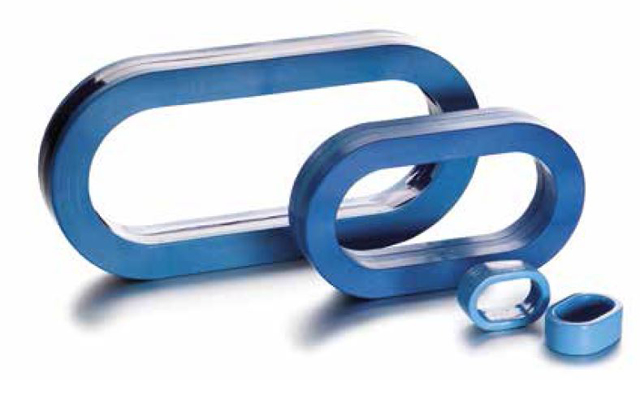
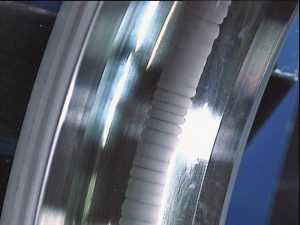
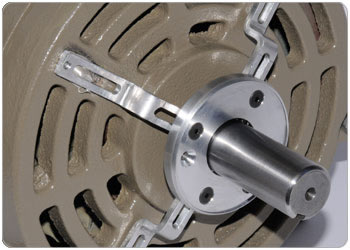
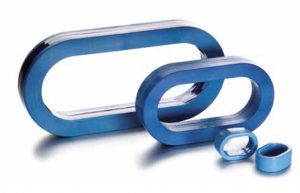

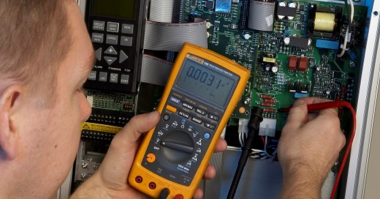


This article is interesting, but it includes several statements and assertions with which I take issue.
For example, early in the article, the author states that “when looking at drives up to 90kW/100HP, it is rare that bearing currents are the root cause of bearing damages”. This is simply untrue. Bearing manufacturers estimate that approximately 50% of all motor failures are due to bearing damage, and researchers have found that “Electrical Discharge Machining (EDM) bearing currents have been found as the main cause of premature bearing damages in Pulse Width Modulation (PWM) inverter fed drives.” [March 2005 Journal of Electrostatics, “Statistical model of electrostatic discharge hazard in bearings of induction motor fed by inverter” by Adam Kempski et. al.]
Later, the author says that “Shaft grounding rings are sold to manage circulating currents in the motor”. Actually, shaft grounding rings are designed to protect motors from capacitive induced shaft voltages –- VFD–induced shaft voltages that are capacitively coupled from stator to rotor through parasitic capacitance – not circulating currents. Typically, isolated bearings are installed to interrupt the flow of circulating currents in larger motors over 100 HP.
The author then claims that “When these filters [common mode chokes] are applied, the cost of isolated bearings and isolation [grounding] rings can be eliminated.” But, while filters [common mode chokes] can reduce high-frequency circulating currents, they do not reduce capacitively induced shaft voltage discharge currents. So, even when equipped with these filters [common mode chokes], motors are still at risk of bearing damage due to shaft voltage discharges.
Finally, the author suggests that “If you have had issues with bearing damages and suspect that it is bearing currents, then installing one of these filters [common mode chokes] might be a fast and easy solution.” In larger motors, installing common mode chokes may serve to reduce high-frequency circulating currents, but the surest way to stop these currents is by installing ceramic or ceramic-coated bearings at one end of the motor shaft, usually the non-drive end. But preventing high-frequency currents from circulating does nothing to prevent capacitive induced voltages from discharging through the bearings at the opposite end of the motor or even through attached equipment. So installing a shaft grounding ring is still necessary to channel these shaft voltages away from bearings and safely to ground.
Hi Adam,
sorry for answering so late. I appreciate your comments to my blog. I do agree that for larger motors there are increasing risks of bearing current damages and that the justification for installing ceramic bearings can be there. I am possibly a little black and white in my statements, but this is often required to start a qualified dialogue like this.
I may also need to refresh my knowledge of grounding rings, admittedly I have not worked much with those and have a limited knowledge of how they work.
My concern really is that I’m seeing specifications calling for isolated bearings and grounding rings on all motors operated by VFD’s, even fractional horse power motors. In my many years of experience selling variable speed drives, I have only seen a couple of bearing damages on motors smaller than 100HP, where it could not be proven that the cause was in fact not bearing currents.
The only thing such requirements do, when there is not specific reason for it, is driving up the installation cost and making it more difficult to justify the energy savings on these smaller motors, as the relative cost for these measures are also higher than on the larger motors.
One main benefit of common mode filters is that they are easy to retrofit on existing installations. Groundfing rings can also be retrofitted, but will often require dismantling the machine to get proper access to the motor. Worst is retrofitting isolated bearings, as the motor has to come out all together.
It is being argued that simply requiring the isolated bearings from the beginning reduces to TCO, as you don’t need to do any retrofitting, but the total project cost may still be a lot higher, as several motors might not need it.
One of the reasons I may not have seen as many damages, as is really the case, could also be that the Danfoss VLT Drives use a special switching pattern, which has a 60° pause in each phase for each cycle, which we have found out limits some of the induced currents compared to normal PWM machines, but doesn’t entirely eliminate them. It also secures 100% output voltage without adding 3rd harmonics to the output voltage (overmodulation) and overmodulation does also appear to increase the level of bearing currents. Since this is Danfoss proprietary solution, it is off course also not included in the studies, but Danfoss drives will have similar issues, as other vendors in this regard, but the levels might be different, which is why the damage may occur less frequently.
Driving down the TCO is always desirable and better drives (such as the Danfoss drives you describe), addition of filters (either common mode ort dv/dt) and purchasing motors with bearing protection rings installed, or installing them in retrofit, as is readily possible from many manufacturers we work with such as Baldor, WEG, TECO, Regal/Marathon and many more makes this goal achievable.
My point in writing a response to your article is that all of these technologies have their place and the benefits of one, such as installing common mode chokes, does not necessarily eliminate or reduce the need for other solutions such as shaft grounding rings to achieve the lowest TCO
– Common Mode Chokes: Reduce common mode currents in large motors and in small motors can also reduce EMI. But they don’t reduce or eliminate the common mode voltages which discharge in the motor’s bearings.
– AEGIS Shaft Grounding Rings, (rings of conductive micro fibers that are arranged in circumferential rows surrounding the motor’s shaft), will provide the path of lowest impedance for these voltages and thereby protect the motor’s bearings.
In the video https://youtu.be/QEZrOS5ou_0 you see a PWM drive operating a motor with common mode chokes and no shaft grounding rings installed. The bearing discharge waveforms are very clear on the oscilloscope. Then when the shaft grounding ring is installed the shaft voltages go away. Common mode chokes do not reduce or eliminate this source of bearing current.
Hi Adam,
sorry for taking a while to come back with an update. I had a lot of talks with our scientist, who are much more knowledgeable on the topic than I am. The grounding rings do, as you state provide a good solution by changing the path of the shaft voltages.
The common mode chokes however do provide a drastic reduction in the common mode voltages from the VFD and we do have strong documentation from lab test, that they not only limit the current variation, but also limit the fast transient when there is sparking within the bearing, which does prevent the bearing damages caused by common mode voltages.
As a drives manufacturer the focus on the solutions we develop is on reducing and eliminating the failure modes caused directly by the drives, which is why high frequency common mode coils are a good solution.
Using these does however not mean that proper installation practices should not be applied, which means that proper ground of the drive, motor and application is still required. It also means that the motor cable should either be screened or a metal conduit to limit the EMI from the motor cable. This will equalize the installation and also help prevent some of the root cause issues for circulating currents in installations.
Just adding one core reduce Vrms, by almost 60% and adding a second core the total reduction is about 80% on the common mode voltage from the drive. You’re right that the common mode doesn’t disappear, but the levels are reduce so significantly that we have no known cases, where they cause bearing failure.
Nice and very helpful article, I’m gonna need more information regarding the motors being used. Thank you very much for the information you gave me, it was very accurate. It’s truly informative as well as amazing.
Baldor Variable frequency drives